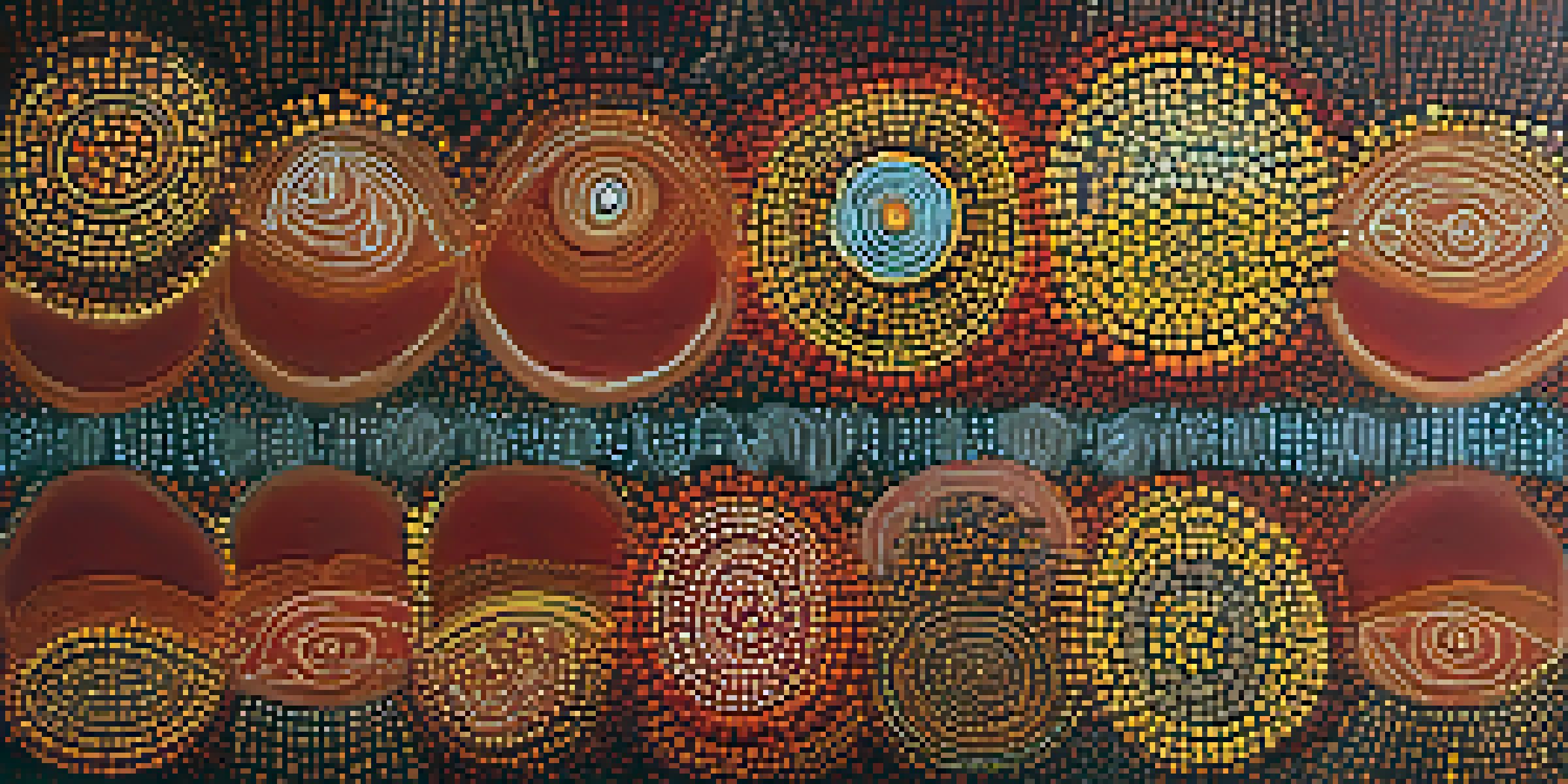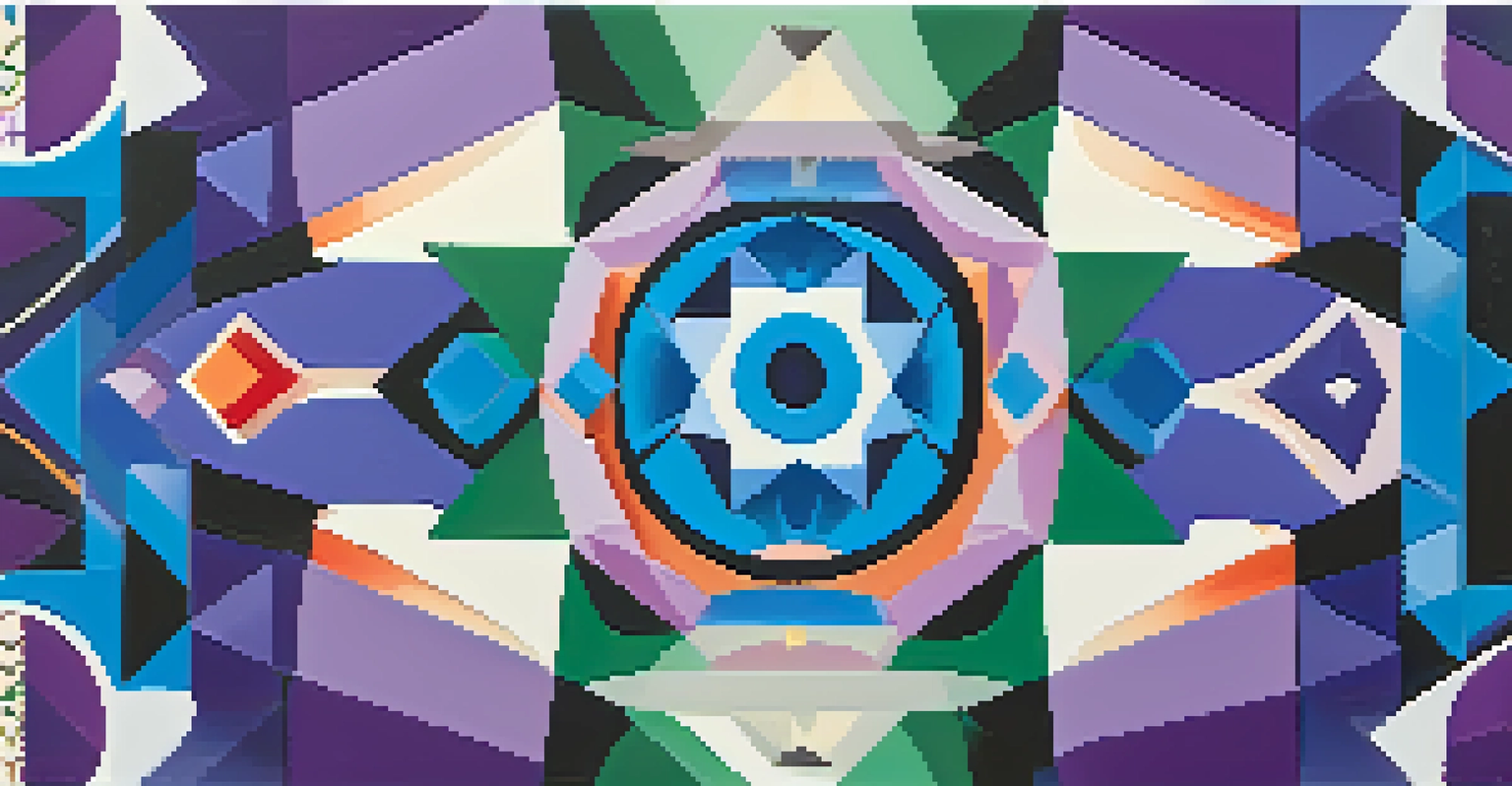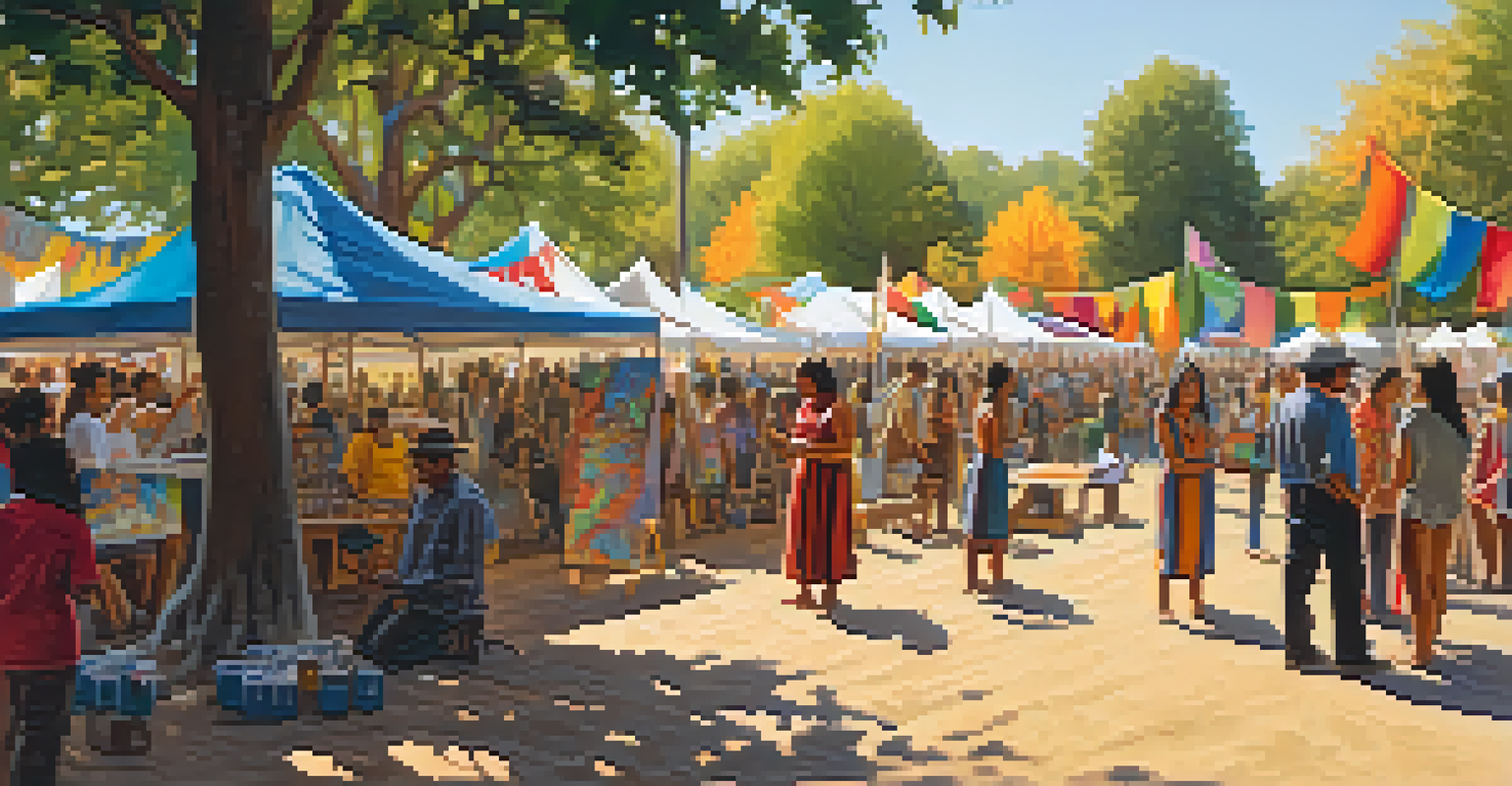The Impact of Colonialism on Indigenous Painting Traditions

Understanding Indigenous Painting Before Colonialism
Indigenous painting traditions have deep roots, often tied to spirituality and community. Before colonial influences, these artworks were expressions of identity, storytelling, and connection to the land. Each brushstroke carried the weight of cultural heritage, with colors and symbols weaving together narratives passed down through generations.
Art is a reflection of our identity and our culture; it is a powerful means of storytelling that carries the weight of our history.
For example, Aboriginal dot painting, which emerged in Australia, was not just an art form but a way to communicate stories of the Dreamtime, reflecting people's relationship with the land and ancestors. This rich tradition showcased the skills and creativity of Indigenous artists, who used natural materials to create vibrant artworks that held significant meaning.
However, the arrival of colonial powers brought significant changes to these traditions. As European settlers imposed their own cultural values and artistic styles, Indigenous art began to be viewed through a different lens, often diminishing its original context and significance.
The Initial Impact of Colonialism on Art Forms
Colonialism disrupted traditional practices by introducing new materials and techniques that reshaped Indigenous art. The use of canvas and oil paints became more common, replacing natural pigments and traditional surfaces. This shift not only altered the aesthetic of the art but also changed the way stories were told through visual representation.

Many Indigenous artists began to adapt to these new materials, blending their traditional styles with European techniques. This adaptation created a unique fusion, but it also raised questions about authenticity and cultural appropriation. For instance, some artists felt pressured to create works that appealed to colonial tastes, leading to a loss of personal and cultural expression.
Colonialism Changed Indigenous Art
Colonialism introduced new materials and techniques that reshaped traditional Indigenous art, often altering its cultural significance.
As colonial powers continued to dominate, the suppression of Indigenous identities further impacted artistic output. Art was often used as a tool for colonizers to showcase their 'civilizing' mission, which marginalized authentic Indigenous expressions and narratives.
Resistance Through Art: A Form of Rebellion
Despite the oppressive environment, many Indigenous artists used their work to resist colonial narratives. Art became a powerful medium for expressing defiance and preserving cultural identity. Through their creations, artists challenged the colonial viewpoint, asserting their presence and stories in a world that sought to erase them.
Indigenous art is not just about aesthetics; it is a way to reclaim narratives and assert our presence in a world that often seeks to erase us.
For instance, the works of artists like Emily Kngwarreye, who gained international recognition, demonstrated how traditional themes could be interpreted through contemporary lenses. By embracing both heritage and modernity, these artists created pieces that resonated with both Indigenous and non-Indigenous audiences.
This resistance through art not only allowed for the preservation of cultural identity but also sparked a broader movement of Indigenous rights and recognition. Art became a rallying point for communities, fostering a sense of unity and purpose in the face of colonial oppression.
The Role of Museums and Cultural Institutions
As colonialism's impact on Indigenous art continued, museums and cultural institutions played a complex role. Initially, many of these institutions showcased Indigenous art within a colonial narrative, often stripping it of its cultural context. This presentation reinforced stereotypes and perpetuated a misunderstanding of Indigenous cultures.
However, over time, some institutions began to recognize the importance of returning these artworks to their communities. Collaborations with Indigenous artists and curators led to exhibitions that honored cultural significance, allowing for a more authentic representation. This shift highlighted the need for Indigenous voices in the conversation about their art and heritage.
Art as Resistance and Identity
Indigenous artists have used their work to assert cultural identity and resist colonial narratives, fostering a sense of unity within their communities.
By embracing Indigenous perspectives, museums have become platforms for education and reconciliation. These efforts not only acknowledge past injustices but also celebrate the resilience and creativity of Indigenous artists in reclaiming their narratives.
Contemporary Indigenous Artists and Their Impact
Today, contemporary Indigenous artists are making waves on the global stage, using their platforms to address issues of identity, colonialism, and environmental concerns. Artists like Kent Monkman and Yvonne Todd challenge colonial narratives through provocative works that encourage dialogue and reflection. Their art serves as a reminder of the ongoing effects of colonialism and the importance of Indigenous perspectives.
These modern artists often incorporate traditional techniques and themes, creating a dialogue between past and present. By doing so, they not only preserve their cultural heritage but also innovate within their art forms, pushing boundaries and redefining what Indigenous art can be.
The growing recognition and appreciation of Indigenous art in contemporary society highlight a shift towards inclusivity and understanding. This evolution marks a significant step in acknowledging the complexities of Indigenous identities and the powerful narratives embedded within their artistic expressions.
The Importance of Cultural Revitalization
Cultural revitalization is crucial for Indigenous communities as they seek to reclaim and celebrate their artistic traditions. Efforts to teach younger generations traditional painting techniques ensure that these practices are not lost to history. Workshops, community events, and art programs serve as vital spaces for sharing knowledge and fostering pride in Indigenous culture.
For instance, many communities are organizing art festivals that showcase traditional and contemporary works, encouraging collaboration among artists of all ages. These events not only promote artistic expression but also strengthen community bonds, reinforcing the importance of collective identity.
Future of Indigenous Art is Bright
The blending of traditional and contemporary influences in Indigenous art suggests a dynamic future that honors heritage while encouraging innovation.
By prioritizing cultural revitalization, Indigenous communities can reclaim their narratives and assert their presence in a world that has often marginalized them. This process is not just about preserving art; it’s about fostering resilience and encouraging future generations to embrace their heritage.
Looking Ahead: The Future of Indigenous Art
As we look to the future, the evolution of Indigenous painting traditions promises to be dynamic and multifaceted. The blending of traditional methods with contemporary influences will likely continue to flourish, creating a rich tapestry of artistic expression. This ongoing dialogue between old and new encourages innovation while respecting ancestral roots.
Moreover, the increasing visibility of Indigenous artists in mainstream art scenes suggests a growing awareness and appreciation of their contributions. This shift paves the way for more inclusive narratives that celebrate diversity and promote understanding among different cultures.

Ultimately, the future of Indigenous painting traditions lies in the hands of the artists who continue to push boundaries while honoring their heritage. As these artists gain recognition and support, they will not only enrich the art world but also inspire future generations to carry forward the legacy of their cultures.